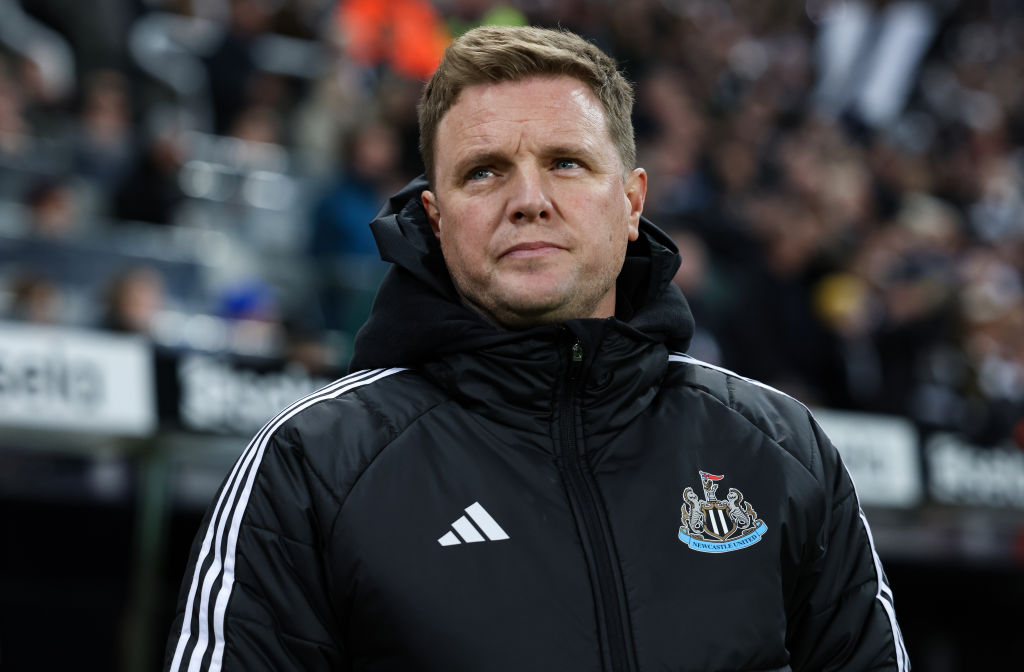Best goalkeeper gloves: The latest ranges from Uhlsport, Sells, Reusch and more
The best goalkeeper gloves to help you level up your game and become an even better stopper between the sticks
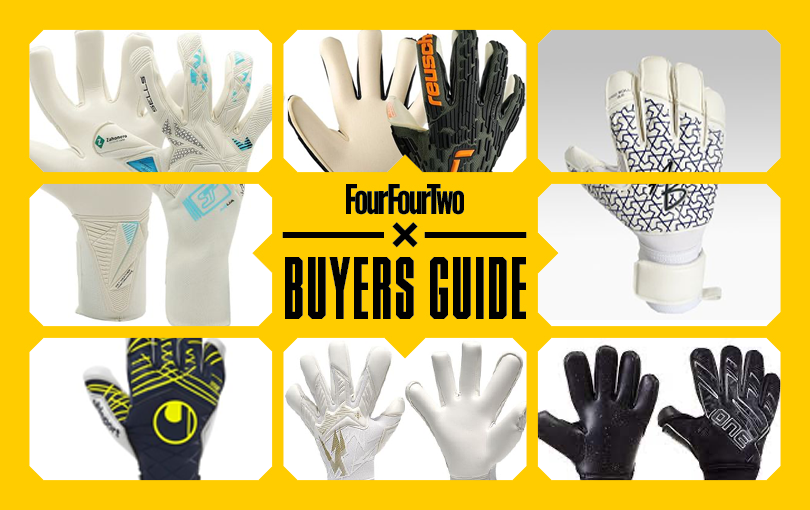
The best goalkeeper gloves for one player might be the exact opposite of what another wants. Professional goalkeepers will talk about grip, comfort and feel, yet each grip, comfort and feel will be particular to that goalkeeper’s preferences.
There are two main differentiators when it comes to goalkeeper gloves, and something even the best goalkeepers in the world will all consider. The first one is the cut, which focuses on the shape of the glove and how it fits the palm, fingers and thumb, while the second is the latex grip, which relates to the texturing and level of thickness on the glove.
Pro goalkeepers go through a lot of gloves in a season because they are fortunate enough to get free or discounted gloves from sponsors - those in the semi-pro or amateur game might not have that same luxury. Some will change gloves very frequently but even the best goalkeepers ever have often prefered to stick with a pair until the grip is nearly gone.
The gloves in this guide are all elite-level gloves. With everyday wear, training and matches, I would recommend having one pair for games and one for training. These are match gloves which, if cared for properly, will give you roughly 10-15 matches. So, with that in mind, here are the best goalkeeper gloves...
The best goalkeeper gloves
1. Uhlsport Prediction Absolutgrip SC
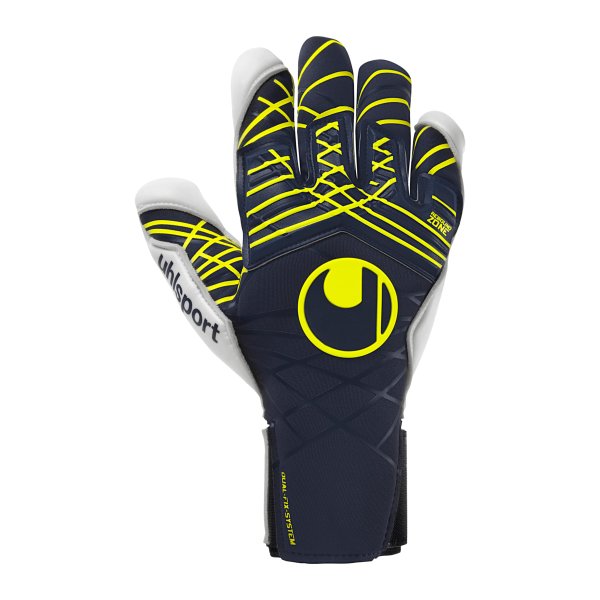
Uhlsport Prediction Absolutgrip SC
Our expert review:
Specifications
Reasons to buy
Reasons to avoid
Had I written this article around five years ago, there’s a good chance Uhlsport wouldn’t have featured. For a period of time, the original main players in this sphere, Uhlsport Reusch and Sondico had become complacent, failed to move with the times and fallen down the glove-purchasing pecking order. The result was an expansion of the market, opening up a pathway for smaller, independent operations who have since grown exponentially and thus made their way onto this very list.
Now, however, said original main players are back. And in Uhlsport’s case, back with a vengeance. So much so that a series of goalkeepers recruited during those recessive years by giants such as Adidas and Nike, have gradually migrated back to the gloves made synonymous with the position throughout the 80s, 90s and 00s.
While the brand, like its competitors, offers up an array of latex compounds for various grip preferences (Supergrip+ and Ultragrip being recent examples exhibited by a selection of stoppers at Euro 2024 in Germany), their go-to staple for 'keepers like myself has always been the Absolutgrip - as presented in this flashy Prediction number.
High-performance foam provides the ultimate all-encompassing glove: I found them equally as effective in wet and dry conditions, plus the bonus of being fairly durable for such a soft, high-level latex.
The “negative” design (ideal for those with slimmer hands) is boosted by a solid grip thanks to the brand’s patented, specially formulated SKIN Cut (where the 'SC' comes from), contributing to a closer ball-to-hand sensation and noticeably tighter fit. This is supported in what Uhlsport refer to as Ultimate Contact, whereby foam wraps the outside edge of the palm, along the outside of the pinky, the inside of the index finger and on both sides of the thumb. Essentially, it all adds to a feeling of more control when handling the ball.
Debate will rumble on when it comes to wrist strap versus slip-on, but Uhlsport’s snug-fitting, two-strap Dual Fix System makes a strong case for the former. Their Flex Entry also allows for a tiny bit of give when putting on and removing the gloves, while also ensuring you don’t feel too restricted during games and training.
If you’re a goalkeeper who prefers a bare-hand feel with a little less absorption and bulkiness, these gloves are a very decent option.
2. Reusch Attrakt Freegel Gold X
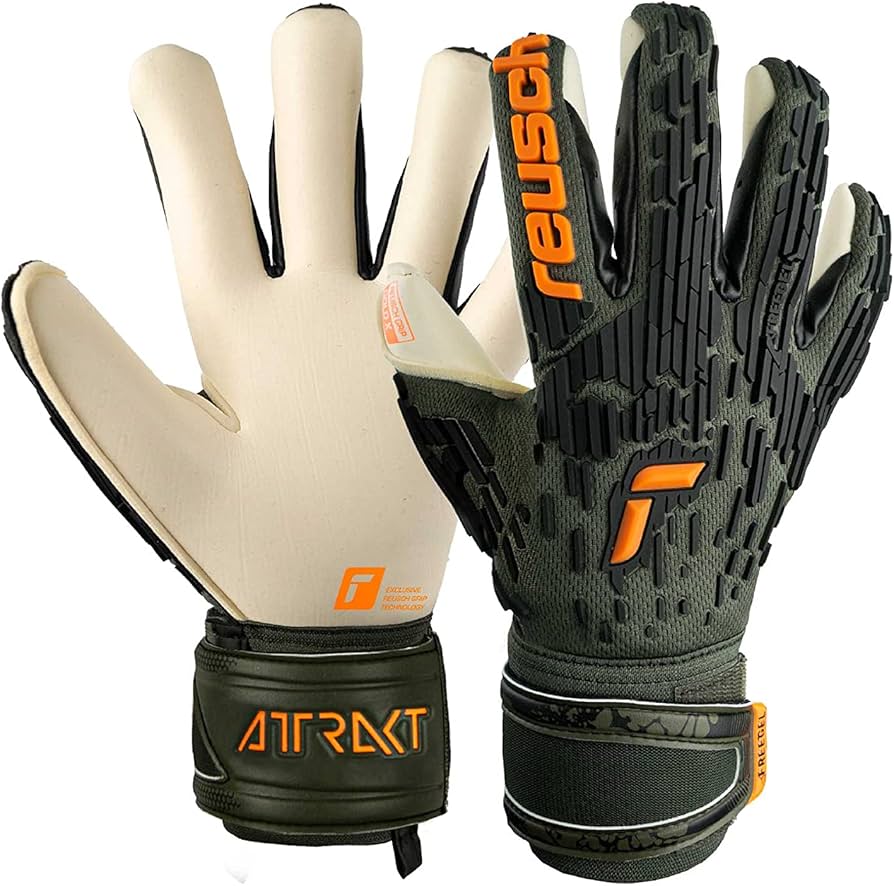
Reusch Attrakt Freegel Gold X
Our expert review:
Specifications
Reasons to buy
Reasons to avoid
Much like Uhlsport (the Real Madrid to their Barcelona, if you will), Reusch have re-staked their claim on the glove market and returned to (Peter) Schmiechel-esque former glories in recent years.
Every professional goalkeeper wearing Reusch tends to sport a different model, with a vast range covering all preference bases and every type of feel. Looking the part is just as key, too, hence the stunning Attrakt Freegel Gold X – an absolute belter in its all-white offering donned by a huge quota of goalkeepers I’ve worked with in recent years.
A twister on the tongue, yes, but a triumph on the hands with the innovative Gold X latex – based on the exclusive Reusch Grip Gold formula – adding subtle adhesive particles to improve grip and tackiness.
The Evolution Negative Cut ESS (Ergonomic Support System, if you’re asking) is another company trademark. A hybrid between a roll finger and flat palm presents benefits of both, with an intricately-designed contrast whereby the inner-seam just ever-so-slightly pinches the lower part of the finger to give a slightly different, but well-covered, feel on the ball.
In addition, a preshaped construction means fingers are spread at the tips more so than some competitors and special attention to the thumb makes this glove more ergonomically superior to others on the market. Firstly, a rolled crotch in that gap between the thumb and index finger keeps everything in check while the palm latex engulfs the thumb to enhance grip and efficiency.
Breathability is considered with tiny holes pricked on the latex between the fingers to boost ventilation and prevent 'clagginess'. And, as the name states, silicone-like Freegel inserts on the upper hand not only add an element of rigidity to the gloves but serve to protect knuckles and add power when punching.
3. AB1 Uno 3.0 Pro Roll
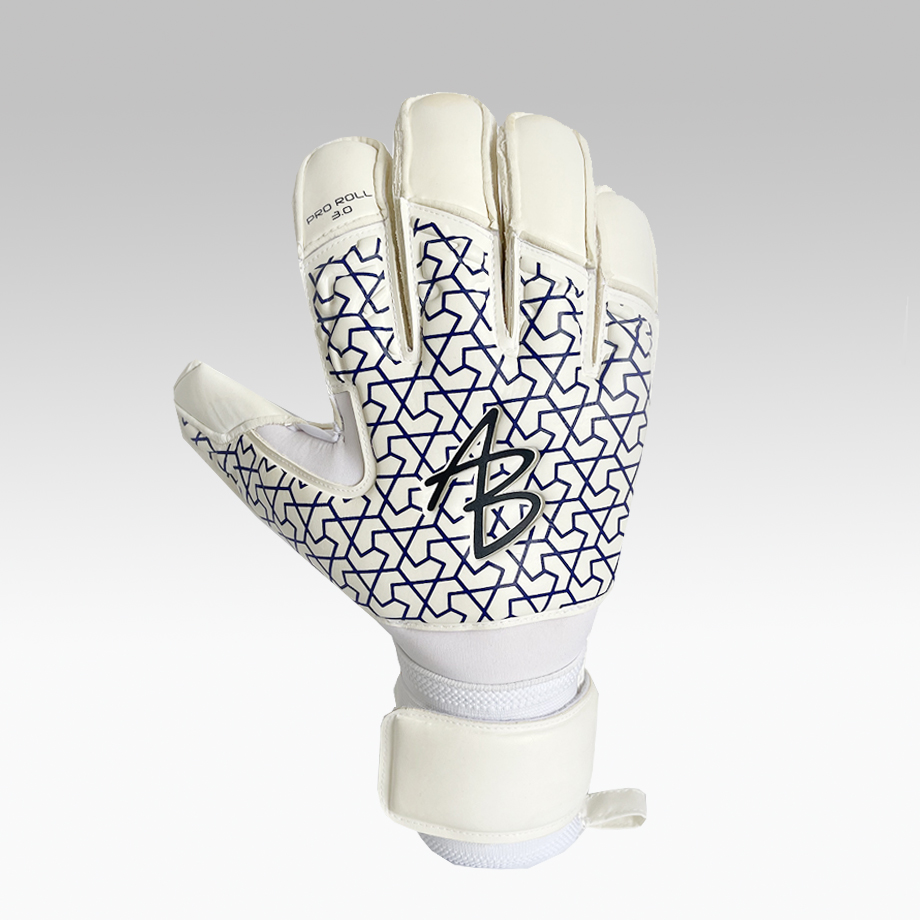
AB1 Uno 3.0 Pro Roll
Our expert review:
Specifications
Reasons to buy
Reasons to avoid
Perhaps it’s romanticism, but in my book traditional roll finger gloves will always be up there with the very best on offer – and the Uno 3.0 Pro Roll tops the list in that department.
AB1 is a prime example of independent brands to have infiltrated the glove market in recent years and, just like his leading roll fingers – a version of which he wore during his days at Portsmouth and Stoke – head honcho Asmir Begovic is, without doubt, the most renowned of the ever-increasing number of goalkeepers launching their own glove enterprise. Begovic personally designs, wears and performs in AB1 gloves, with the Bosnian's wealth of knowledge and experience going into the research for this quality option.
In terms of design, a chunkier tailored fit for comfort, absorption and feel on the ball is top-notch, with a 4mm thick, all-weather latex providing solid hand-to-ball contact. The latex is extra soft for superior grip, yet in this case durability just outweighs its counterparts – just as it does for the entire glove with extra stitching maintaining areas more likely to fray. I found this makes them last that little bit longer.
New additions for last season were an updated latex strap with a three point locking system, plus the option of removable spines. It is worth noting that very few pros wear finger protection gloves these days, purely due to the fact it can limit the movement and flexibility of your fingers and hamper your control on the ball.
However, often from a psychological standpoint, finger protection can be useful if you’re returning from injury and require extra padding to prevent a recurrence of that injury. Therefore, having the option to wear with or without the spines is a really nice touch for a well-cushioned glove at a decent price point for amateur goalkeepers looking to emulate opposite numbers at the highest level.
For full transparency, I’ve worn these for the past few years as a Goalkeeper Coach and couldn’t recommend them highly enough.
4. Sells Claw Aqua Fit
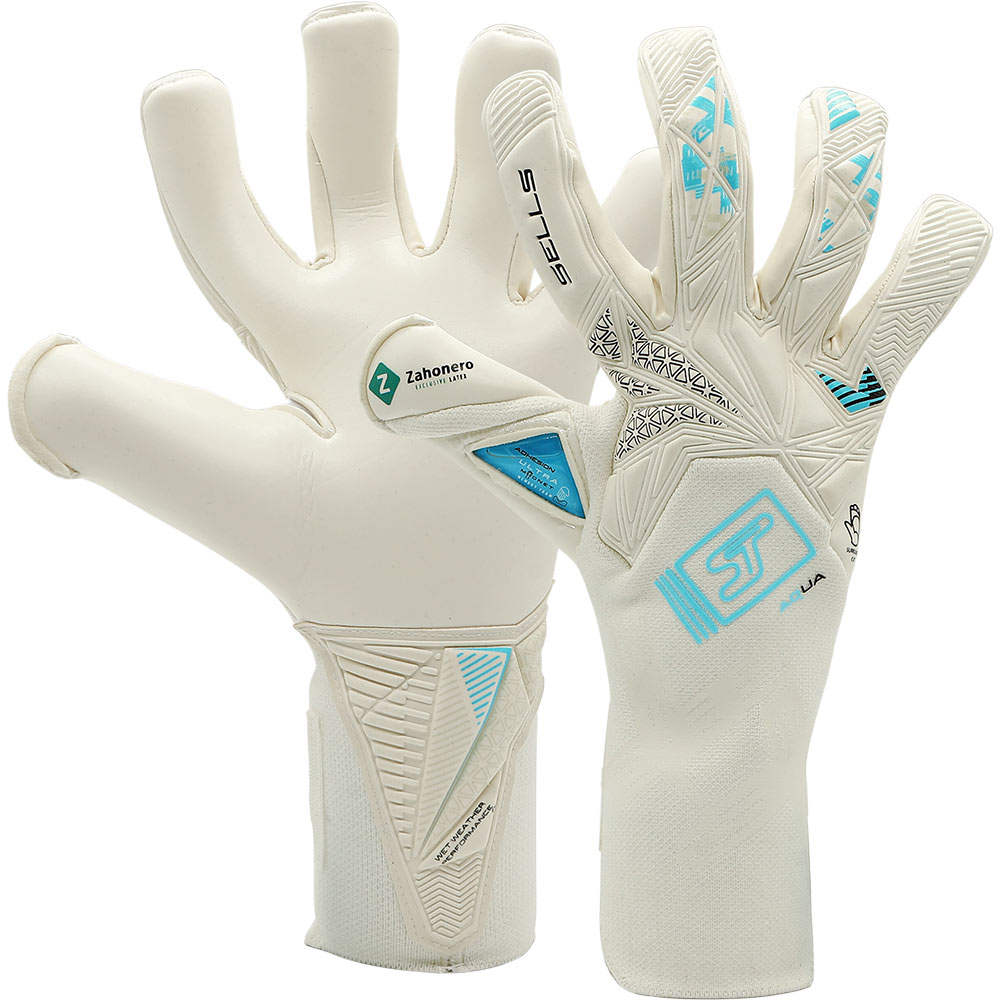
Sells Claw Aqua Fit
Our expert review:
Specifications
Reasons to buy
Reasons to avoid
Sells have always been at the very forefront of glove technology, prompting others to follow suit. Cue the Claw Aqua Fit – a truly outstanding piece of equipment nestled among a fantastically innovative range boasting pretty much something for everyone.
The new-style Curve Cut makes for another tight-fitting number, acting as a negative stitched version of the Expanse Cut to create the claw-like feel that not only envelopes the hand to offer a full range of movement, but mirrors the shape of the ball to maximise ball-to-hand contact. It’s also one of four new options within the range to feature a trademarked Surround Cut, first developed more than 20 years ago by founder Adam Sells to ensure the palm is constructed to wrap neatly around the outer hand. Again, this provides optimal comfort and increased performance to perfect that “W” technique.
As with other brands, latex comes in different property variants for specific gloves. For Sells’ own Adhesion Ultra grip, latex is topped with 4mm memory foam – a brand new formula developed for extra tackiness in wet weather. There’s also a specially formulated Acclimatize material developed for moisture wicking on the upper hand and wrist. This allows the fabric to adapt to body temperature and aid comfort in hot and cold climates.
Now for what I see as the pièce de résistance: removable straps. Personally, straps are a non-negotiable for me. I have small wrists and thus can’t go without them. Whenever I’ve opted for strapless gloves off the peg, the glove has either been far too tight and far too small or far too baggy and far too big. Some goalkeepers prefer that second skin feeling and view the strap as an oversized inconvenience. Others are partial to the versatility a strap can offer and, just like the psychological advantage of finger protection, feel like they’ve really cemented glove to hand when forcibly wrapping that latex lever onto Velcro. Here, the smartly-designed straps give you the option of having one or the other.
Such is the quality and reputation of a Sells glove, price points tend to be at a premium and the Claw Aqua Fit is a prime example of that. Therefore, it’s better to treat this purely as a matchday glove and opt for a cheaper model for training. Latex will be harder which results in less grip, but they’ll last longer with more durability in a busy training session. It’ll also mean you should only require one or two pairs throughout a season, in turn leaving your prized possessions for the 90 minutes on a Saturday.
5. ONE Apex Pro Colossus
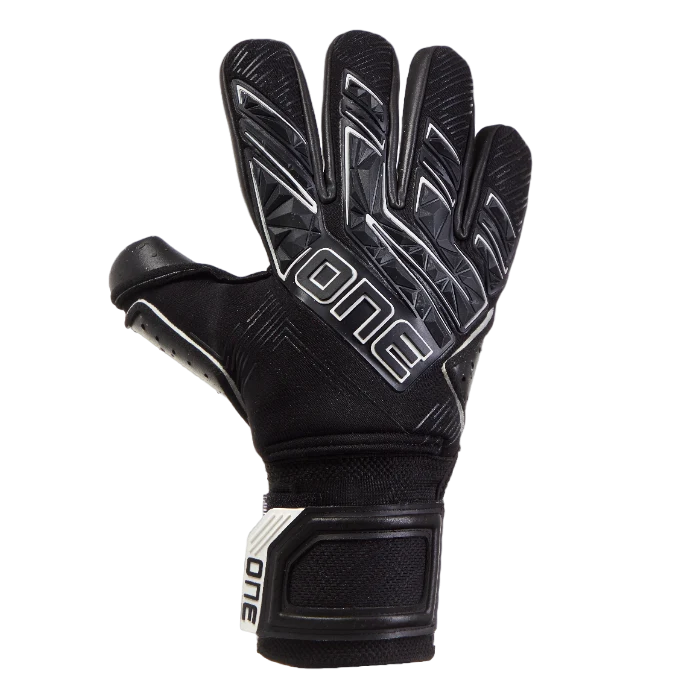
ONE Apex Pro Colossus
Our expert review:
Specifications
Reasons to buy
Reasons to avoid
Features on ONE’s Apex Pro Colossus come in the form of D-Flex, Echo Form, X-Wrap and i1 - the latter of which is the exclusively engineered 4mm latex, first unleashed just two years ago and designed to be extremely durable while maintaining grip quality. This means you could potentially use the gloves both in training and on matchdays.
D-Flex provides a healthy amount of shielding on the upper. Some manufacturers can go too heavy on this and almost present a robotic look to their gloves – a point ONE considered in reducing the surface area of the shielding from previous designs. Strategically placed flexi-cuts aid punching and protection without compromising on complete movement across the hand. Removable spines in the fingers offer choice for added security.
Echo Form is the unique internal grip combined with a well-stitched negative cut. Turn them inside out and you’ll notice what ONE has called “echos” placed on the palm, the thumb and fingertips. These are individually shaped curves (precise minutiae on each echo being a big selling point here) designed to counteract natural hand movement when struck with the ball.
Lastly, X-Wrap is their own control system on the outside of palm and thumb areas – not too dissimilar from wraparound latex present in others on this list. Like the attention paid to D-Flex, the fresher design means the gloves don’t feel too tight, placed in ONE’s own size guide under “Fitted” (Standard and Ultra-Fitted being the other two types).
6. Kaliaaer Joe Hart JHPro 1.3 Legend
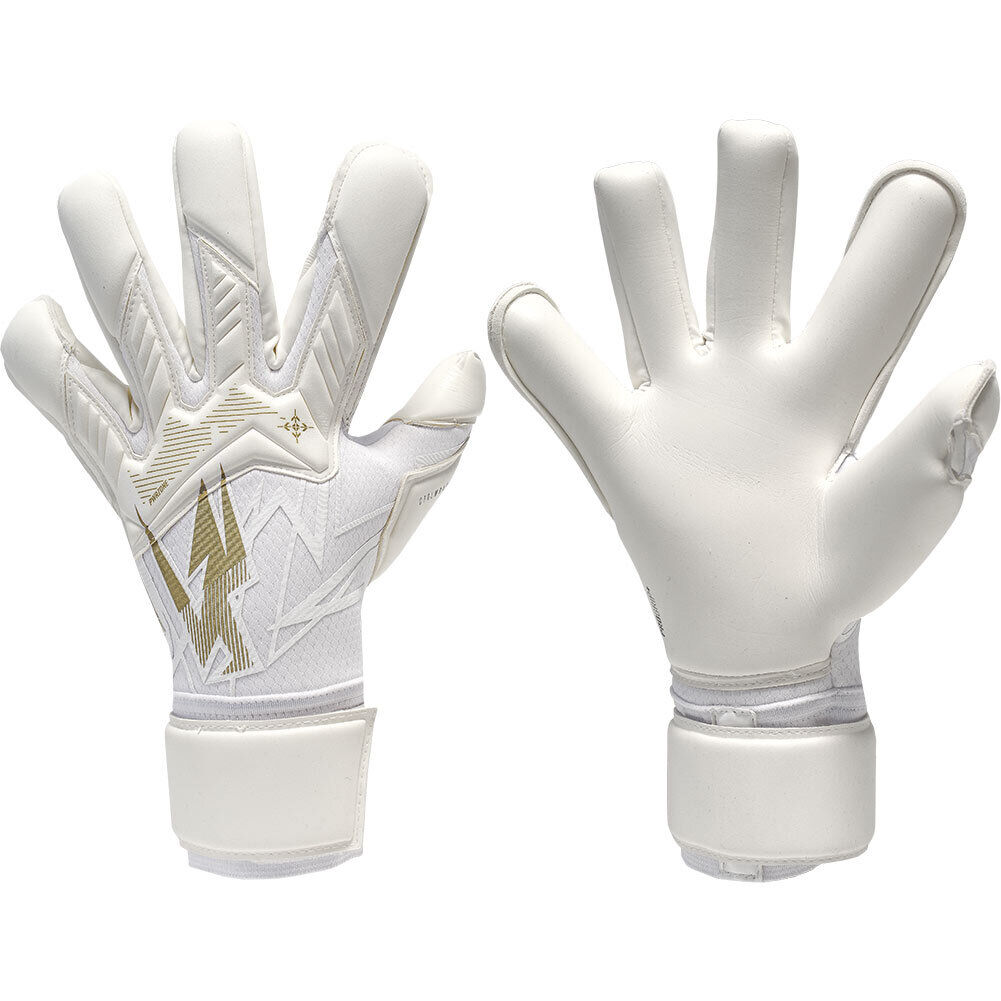
Kaliaaer Joe Hart JHPro 1.3 Legend
Our expert review:
Specifications
Reasons to buy
Reasons to avoid
Kaliaaer – the brainchild of ex-pro and current Partick Thistle Goalkeeper Coach, Kenny Arthur – are the most market disrupting gloves available on the market. Now worn by an increasing number of stoppers in the game, Joe Hart looked the part in his final double-winning campaign with Celtic before he retired.
The 3DXi+ cut may be a bit of a mouthful, but its roll finger/negative hybrid gives a really nice feel on the ball. Indeed, the semi-roll on the index and pinky is complemented by that more streamlined negative cut on the three middle fingers.
Latex comes in the form of an Ultracharge 4mm Progrip+, and the big sell here is that gloves are “pre-charged” from the outset and don’t require any treatment prior to first use. The JHPro 1.3 Legends are ready to rock straight out of the bag.
Arguably the chunkiest pair on this list, the addition of PWRZONE tech on the back of the fingers protects knuckles while latex wraps around finger tips to suggest that when ball meets glove, glove always wins.
Hi>Dri is the last element worth mentioning here. Again, similar to others, the new-age tech focuses on being able to perform in different climates with a more adaptable, quick-drying glove.
How we test goalkeeper gloves
We enlisted the help of goalkeeping coach and glove afficionado David Rouse to talk through the best products currently available to 'keepers in the modern market.
The former Football League shotstopper has worked as a goalkeeping coach at clubs such as Manchester United, QPR, Stoke City and Burnley, as well as the Northern Ireland national team.
An authority in the game, Rouse has used every single glove while teaching his goalkeepers, providing him with the expert knowledge needed to compile his list of the six best available right now.
How to choose the right goalkeeper gloves
Some goalkeepers prefer a second skin, so they can feel everything. Some prefer more padding and more shock absorption on the ball. The biggest criteria is grip in the wet. Especially in the UK.
All big sports brands make gloves, but I'm a big believer in ones that specialise. Nowadays you see so many goalkeepers in OneGlove, Kaliaaer, AB1 and Sells. Goalkeepers outside of pro level generally aren’t as big on bigger brands due to cost. These brands, outside of Sells - they’re pricey but do take down versions - are reachable for the average goalkeeper.
At elite level, bigger brands specialising in boots often means the goalkeepers endorsing that brand will then wear their gloves by default. It’s rare that gloves lead to boots.
When goalkeepers change brands, they take a long time to decide and won’t be seduced by the biggest brand offering the biggest pay cheque. It’s about what feels best for them.
It’s important that you find what is right for you and what you feel most confident in. Ultimately, it’s the hands in the gloves that are the most crucial aspect in all of this. The gloves just act as an extension of your goalkeeping skills.
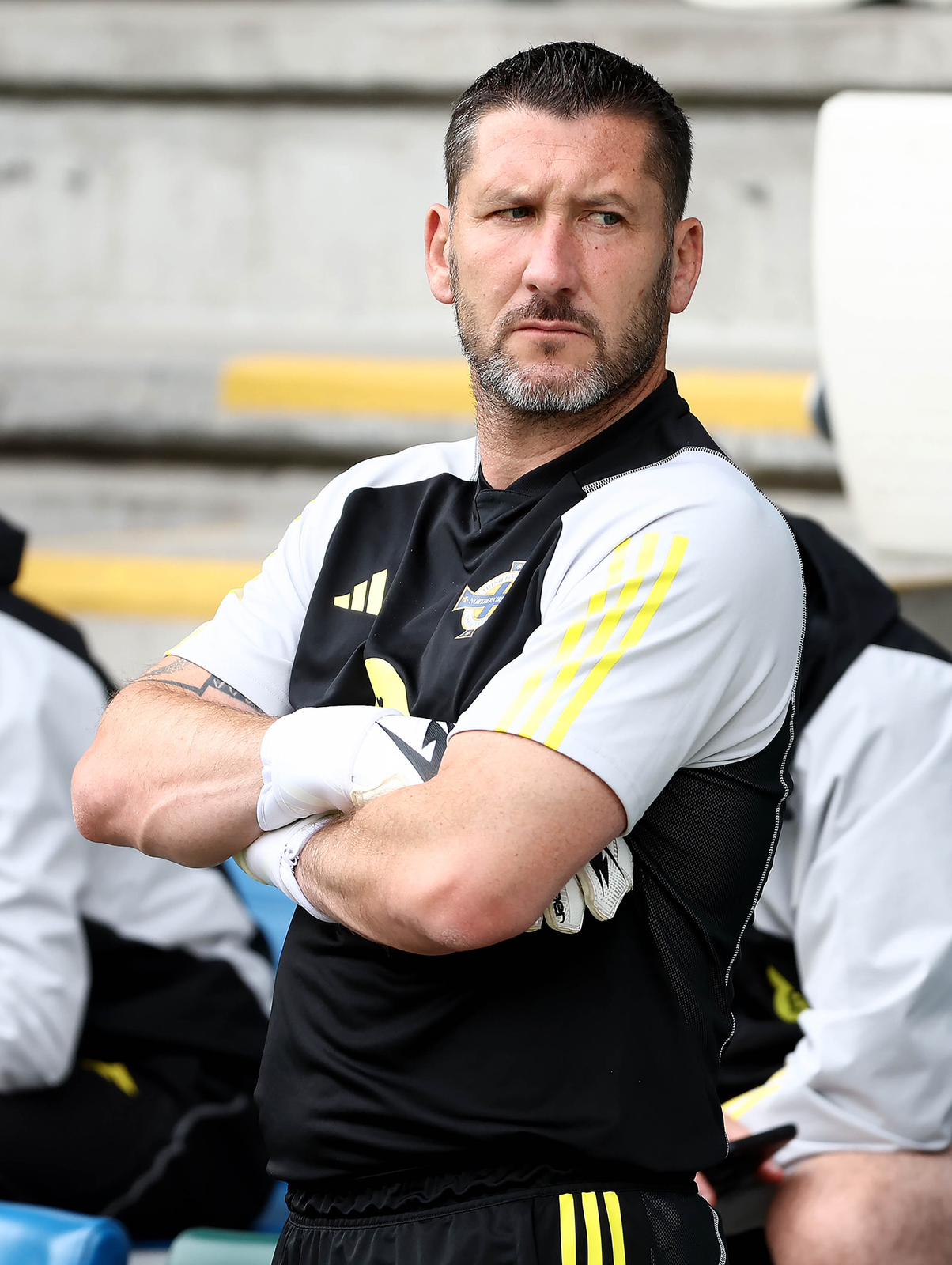
David Rouse has been entrenched in the world of goalkeeper coaching for more than 30 years. Having earned his stripes in the lower echelons of the Football League, he progressed to elite-level development in the academy at Manchester United, bringing through the likes of Tom Heaton, Sam Johnstone and Ben Amos.
He has since worked as Head of Goalkeeping at QPR, Stoke City, Burnley, Northern Ireland and had a spell in the UAE.
Get FourFourTwo Newsletter
The best features, fun and footballing quizzes, straight to your inbox every week.
David Rouse has been entrenched in the world of Goalkeeper Coaching for more than 30 years. Having earned his stripes in the lower echelons of the Football League, he progressed to elite-level development in the Academy at Manchester United, bringing through the likes of Tom Heaton, Sam Johnstone and Ben Amos. A switch to Head of Goalkeeping at QPR came next (look closely and you’ll see him dotted about the notorious Four Year Plan documentary) before a return to Manchester, this time linking up with the City Group and very nearly missing that iconic “Aguerooooo!” moment (believing the game was beyond reach, he was about to head down the tunnel at the Etihad).
Sandwiched between spells in the UAE were stints at Stoke, Burnley and Northern Ireland. Not only a coach but a specialist in recruitment and the art of psychology, he’s worked with a wealth of highly-acclaimed goalkeepers and managers, now passing on his expertise as a goalkeeping mentor.
Rouse is also a regular contributor to the Goalkeepers’ Union Podcast.
